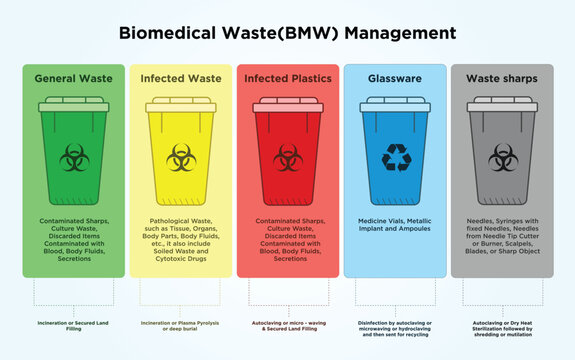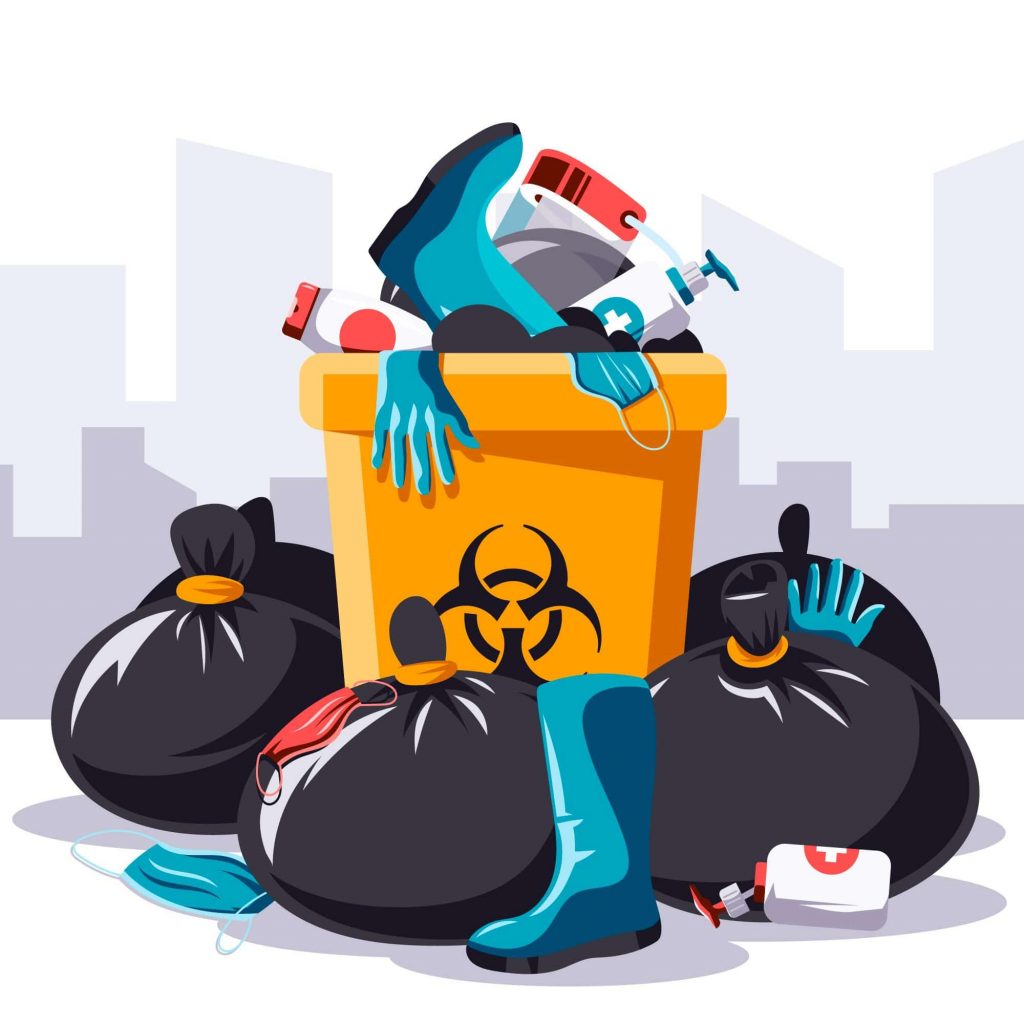Certified and Reliable Medical Waste Removal Service: Partnering for a Cleanser Future
Efficient Techniques of Medical Garbage Disposal
Efficient approaches of medical waste disposal are crucial in maintaining public health and wellness and ecological safety and security. Medical waste, including sharps, pathological waste, and pharmaceutical waste, must be taken care of and taken care of properly to stop the spread of infections and shield the environment. This requires adherence to stringent laws and the implementation of professional waste administration techniques.
Appropriate partition of clinical waste, secure and protected storage space, efficient therapy and disinfection methods, and environmentally-friendly disposal choices are key elements of an efficient clinical waste disposal system. Specialist waste monitoring solutions play a crucial function in making certain compliance with policies and reducing the risks related to incorrect disposal. By employing these approaches, healthcare centers can add to a more secure and cleaner setting while protecting the health of the area.
Correct Segregation of Clinical Waste
Proper partition of medical waste is crucial for making sure the safe and efficient disposal of these possibly unsafe products. Clinical waste refers to any type of waste generated during healthcare activities, such as healthcare facilities, facilities, research laboratories, and study centers. It consists of a variety of products, such as utilized needles, syringes, polluted dressings, expired or unused medications, and biological products.
By setting apart clinical waste, health care centers can reduce the danger of infections, injuries, and environmental contamination. The process involves categorizing waste into different types, such as sharps, infectious waste, pharmaceutical waste, and non-hazardous waste. Each type requires certain handling, product packaging, and disposal methods to prevent exposure to healthcare employees, waste monitoring personnel, and the basic public.
To guarantee correct segregation, medical care facilities ought to create clear guidelines and supply sufficient training to employee. This includes enlightening employees on the different waste groups, proper packaging strategies, and using proper containers - WasteX Medical Waste Disposal. In addition, clear signs and color-coding systems can be carried out to help with the recognition and segregation of various waste kinds
Safe and Secure Storage Space of Medical Waste
Safe and secure storage of medical waste is vital for keeping the honesty and control of possibly hazardous materials. Proper storage not only safeguards health care employees and the public from direct exposure to unsafe materials yet also prevents environmental contamination.
To make certain secure storage, medical centers must stick to certain guidelines. Waste needs to be kept in puncture-resistant and watertight containers that are identified appropriately - medical waste disposal.
Appropriate partition of medical waste is likewise necessary for secure storage. Various sorts of waste, such as sharps, infectious products, and pharmaceutical waste, ought to be divided to stop cross-contamination. This segregation can be accomplished via making use of color-coded containers or containers.
Routine surveillance and assessment of the storage area are vital to determine any possible risks or violations. This consists of checking for indicators of damage or damage in the containers, making sure proper ventilation, and keeping track of temperature level and humidity degrees.
Effective Treatment and Sanitation Methods

One frequently made use of treatment technique is autoclaving, which entails subjecting the waste to high-pressure vapor at temperature levels above 121 levels Celsius. This procedure effectively kills microorganisms and ruins transmittable agents, making the waste risk-free for more disposal. One more method is incineration, which includes melting the waste at high temperatures. Incineration not only gets rid of microbes yet also decreases the waste volume via burning.
Chemical disinfection is another reliable approach for treating clinical waste. This approach includes making use of disinfectants such as chlorine substances, phenolic substances, or hydrogen peroxide to kill or suspend microorganisms (WasteX Medical Waste Disposal). Chemical sanitation is usually utilized for liquid waste, such as research laboratory samples or physical fluids
Over the last few years, alternative therapy techniques such as microwave sanitation, irradiation, and biological therapy have additionally acquired focus. These methods supply advantages such as lowered environmental effect and energy usage contrasted to conventional approaches.
Environmentally-friendly Disposal Options
In the world of medical garbage disposal, thinking about environmentally-friendly options is crucial. Medical care facilities create a considerable quantity of waste, including transmittable materials, drugs, and chemicals, which can present serious dangers to human health and the setting if not taken care of correctly. Fortunately, there are a number of environmentally-friendly disposal alternatives offered that can help alleviate these threats.
One such alternative is reusing. Recycling clinical waste involves setting apart and processing particular products for reuse or repurposing. As an example, plastics, glass, and steel containers can be recycled, reducing the need for brand-new products and reducing the quantity of waste sent out to garbage dumps. In addition, some healthcare facilities have actually implemented reusing programs for particular medical gadgets or devices, more reducing waste generation.
This approach includes converting medical waste into power via procedures like incineration or anaerobic food digestion. Anaerobic digestion, on the other hand, breaks down organic waste in the lack of oxygen, generating biogas that can be made use of for power or warmth generation.

Advantages of Expert Waste Management Provider
One significant benefit of specialist waste management services is the boosted efficiency in disposing and managing of clinical waste. By utilizing expert waste monitoring services, medical care facilities can guarantee that all clinical waste is taken care of and disposed of properly, lessening the risk of contamination and the spread of diseases.
Specialist waste management services utilize experienced and experienced workers who are knowledgeable concerning the regulations and standards for medical waste disposal. They have accessibility to specialized devices and devices that enable them to take care of different kinds of clinical waste safely and effectively. These services additionally have well-established treatments and methods in position to make sure that waste is set apart, packaged, transported, and disposed of in conformity with neighborhood, state, and government guidelines.
Furthermore, expert waste administration solutions can supply health care centers with detailed waste administration remedies. They can provide solutions such as waste collection, transport, treatment, and disposal, tailored to the particular demands and needs of the facility. This removes the concern of taking care of waste internally, allowing health care staff to focus on providing top quality client treatment.
Conclusion
In conclusion, effective approaches of medical waste disposal include appropriate segregation, safe storage, treatment and sanitation, and environmentally-friendly disposal alternatives. These techniques make certain the safe handling and monitoring of clinical waste, stopping the spread of infections and safeguarding the atmosphere.
Medical waste, consisting of sharps, pathological waste, and pharmaceutical waste, have to be handled and disposed of correctly to prevent the spread of infections and shield the atmosphere.Appropriate segregation of medical waste, safe and protected storage, effective treatment and sanitation techniques, and environmentally-friendly disposal options are vital elements of a reliable medical waste disposal system. The process involves categorizing waste into various kinds, such as sharps, contagious waste, pharmaceutical waste, and non-hazardous waste. By using specialist waste management services, medical care centers can guarantee that all clinical waste is handled and disposed of appropriately, decreasing the danger of contamination and the spread of illness.
Professional waste management solutions employ experienced and experienced employees who are well-informed regarding the policies and guidelines WasteX Medical Waste Disposal for clinical waste disposal.